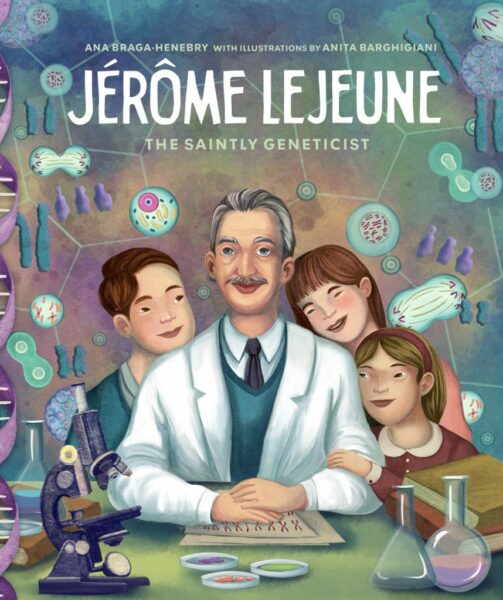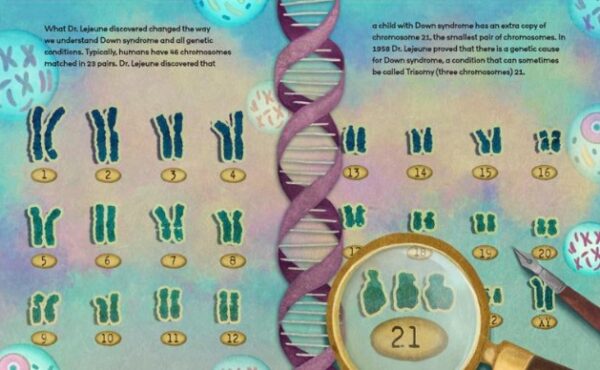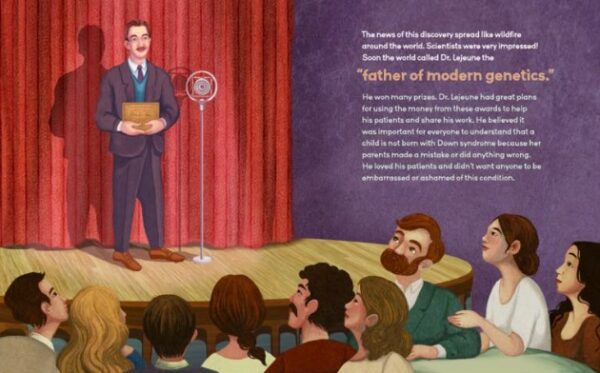Book Review: Jérôme Lejeune: The Saintly Scientist
Review: Ana Braga-Henebry’s “Jérôme Lejeune: The Saintly Scientist”
 One of the great Catholic heroes of modernity is Venerable Jérôme Lejeune (1926-1994). Dr. Lejeune was the French geneticist whose work was instrumental in understanding Down Syndrome’s cause. This was a momentous discovery in the scientific world. Catholics also recognize Dr. Lejeune as an advocate for the dignity of all people and his principled stand in support of children diagnosed with Down Syndrome in the womb.
One of the great Catholic heroes of modernity is Venerable Jérôme Lejeune (1926-1994). Dr. Lejeune was the French geneticist whose work was instrumental in understanding Down Syndrome’s cause. This was a momentous discovery in the scientific world. Catholics also recognize Dr. Lejeune as an advocate for the dignity of all people and his principled stand in support of children diagnosed with Down Syndrome in the womb.
The story of Ven. Jérôme Lejeune is now being beautifully told in a new book by Ana-Braga Henebry, Jérôme Lejeune: The Saintly Geneticist [Word on Fire]. This book—richly illustrated by the Italian artist Anita Barghigiani—introduces children to the life and work of the saintly French doctor.
Living Literature: Biography, Science, Ethics
This book skillfully weaves three different narratives together, which is no easy task. First, we learn about the biographical details of Lejeune’s life: his youth in France during World War II, where he was homeschooled by his father, his medical studies, scientific work, marriage & family life, and advocacy work. Second, we learn about the science of Down Syndrome through an explanation of chromosomes and genetics. Finally, there is the story of Lejeune’s ethical advocacy for the right to life of all children in the face of those who argued from the eugenicist position that children in the womb identified with Down Syndrome should be aborted.
Every aspect of this book is done well, but I want to highlight the scientific sections for special praise. I was not expecting the author to spend much time delving into the science of genetics and how chromosomes work. However, it quickly became apparent how necessary the science is to the story. Without this sidebar into human biology, it would not be possible to grasp the importance of Lejeune’s discoveries.
Down Syndrome Breakthrough
Down Syndrome has always been with us, of course, but its genesis remained largely unknown. In the 19th century, Down Syndrome was called “Mongolism” based on the belief that those with the condition had inherited “Mongoloid” genes. In the early 20th century, the prevalent view was that the condition was caused by certain behaviors of parents that either inhibited their ability to produce healthy offspring or else damaged the fetus during gestation, akin to the way alcohol consumption during pregnancy can cause fetal alcohol syndrome.
Lejeune’s breakthrough was his discovery of the extracellular material in chromosome pair 21 (this is why the scientific name for the condition is Trisomy 21), which accounted for it. Understanding this is simply not possible without a digression into the genetics of chromosomes, which the book handles very well. I was pleased to see multiple pages with diagrams of chromosomes and explanations for the biology behind Down Syndrome.


Advocacy for the Unborn
There is also a nice bit of detail about Lejeune’s advocacy work on behalf of children with Down Syndrome. Lejeune was praised for his discovery, even being called the father of modern genetics in his old age. However, he increasingly became a thorn in the side of certain segments of the medical establishment, who, in light of new technologies for prenatal screening of Down’s Syndrome, were increasingly advocating for parents’ rights to terminate pregnancies of children found to carry the genetic abnormality.
Here, we see Lejeune not merely as a scientist but as a man of faith and defender of human rights, working hand in hand with the likes of Mother Teresa and John Paul II in defense of the unborn. It admirably shows how Lejeune’s faith informed his scientific work. He never lost sight of the fundamental personal dignity of the Down Syndrome community. Thus, he is not only a model scientist but a model of Catholic ethics in a medical community increasingly hostile to human dignity.
Conclusion
The narrative is pretty straightforward. There’s some excellent supplemental information at the end about Ven. Jérôme Lejeune’s work. This is helpful for delving deeper into his life. I’d say the target audience is 7-10 year olds. However, it’s a great book to share with any child. It would also be ideal for older siblings to read aloud to younger siblings, as the ethical and science lessons of the book are inspiring for all ages.
Overall, Ana Braga-Henebry and ‘Anita Barghigiani’s Jérôme Lejeune: The Saintly Scientist offers a solid and aesthetically pleasing introduction to the life of one of the great Catholic scientists of the 20th century.
Do you have great picture books to share? I invite you to join me and other Catholic homeschooling parents at our Homeschool Connections Community or our Facebook group. We’d love to hear about your favorite living literature resources and homeschool tips!






